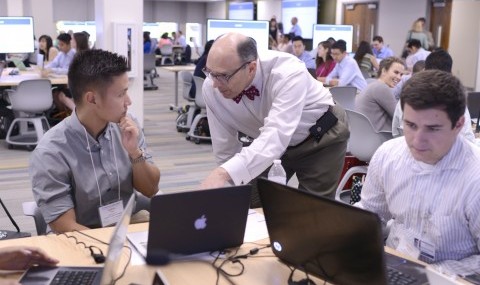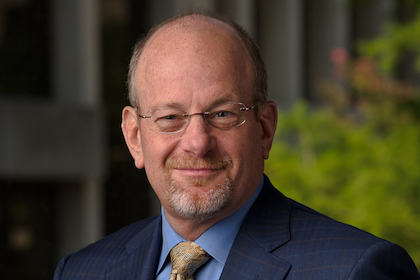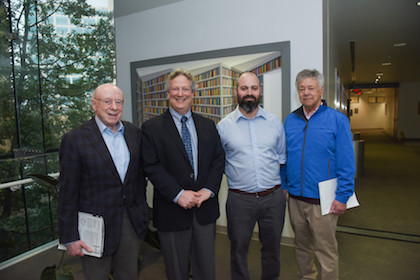Team Based Learning Center helps drive medical-school curriculum changes

By Lin Lofley
Members of UT Southwestern Medical School’s Class of 2019 got their first look at the future of medical education on Aug. 12 when they took part in hands-on exercises in the Team Based Learning (TBL) Center as part of the annual orientation program for new students.
The TBL Center, located on what was previously the second floor of the South Campus Library where once were shelves of medical texts and periodicals, is a $4 million facility that can seat up to 240 students (there are 238 in the incoming medical school class) at its 40 tables, each with its own video screen.
Moveable hideaway walls make it possible to convert the space into three learning areas, each with an instructor station, and the room can support 960 wireless connections as well as multiple high-definition screens and integrated wireless connections. Instructor stations offer the ability to pull video from any individual screen in the TBL Center and display it on other screens.
The facility is already considered an integral part of the education the newest students at UT Southwestern Medical Center will receive over the next four years.
“Our old curriculum was strong,” said Dr. Robert Rege, Associate Dean for Undergraduate Education and Professor of Surgery, “and our new curriculum sacrifices nothing of that historic strength in order to get us into the 21st century of medical education.”
The curriculum changes beginning in 2015 reflect calls across the medical establishment to adjust how doctors are educated. At the orientation, Dr. Rege told the MS1 members that learning previously concentrated on passive learning, memorization, and cramming for tests.
“Students crammed for those tests, and after the test they sometimes forgot those things as they moved to the next academic hurdle,” he said. “We didn’t feel that methods fostered either problem-solving, or teamwork, or the acquisition of medical skills.”
In summing up, he said, “We did not cut out anything in creating this new curriculum.”

Dr. Christopher Faulkner, Manager of Education Technology, and Dr. Lindsey Pershern, Clinical Assistant Professor of Psychiatry, guided the student through the system and team-based learning, also identifying particular items to address before classes actually begin.
“Anybody having an issue?,” Dr. Faulkner asked at one point. Looking over a sea of raised hands, he smiled and said, “Awesome. Exactly what you want to see.” His observation filled the room with laughter.
“Better to identify these things now than when classes begin,” Dr. Pershern said.
She introduced the framework of the TBL program, which incorporates an active small-group strategy to replace lectures medical students have received for many years. TBL is a longtime educational strategy in business and science, she said, but has only recently been introduced into medical education.
“There were a few technical difficulties, but they’ve addressed most of our questions,” said MS1 Navin Maredia, a graduate of Emory University. “I’m optimistic, because the curriculum is really geared toward us.”
Ms. Maredia admitted being uncertain about the TBL approach, but for a very good reason: “It’s ingrained in most of us to study on our own, so being part of a team of six students (for 18 months) will be a new experience. On the other hand, TBL will give us the opportunity to interact and learn from each other.”
“I just got here and I already love it,” said MS1 Patrick Roberts, a Houston Baptist University graduate. “The dedication to excellence is all around us. Just in the exercise with my teammates a few minutes ago, we were able to come together, work on one answer, and get the right answer.”



